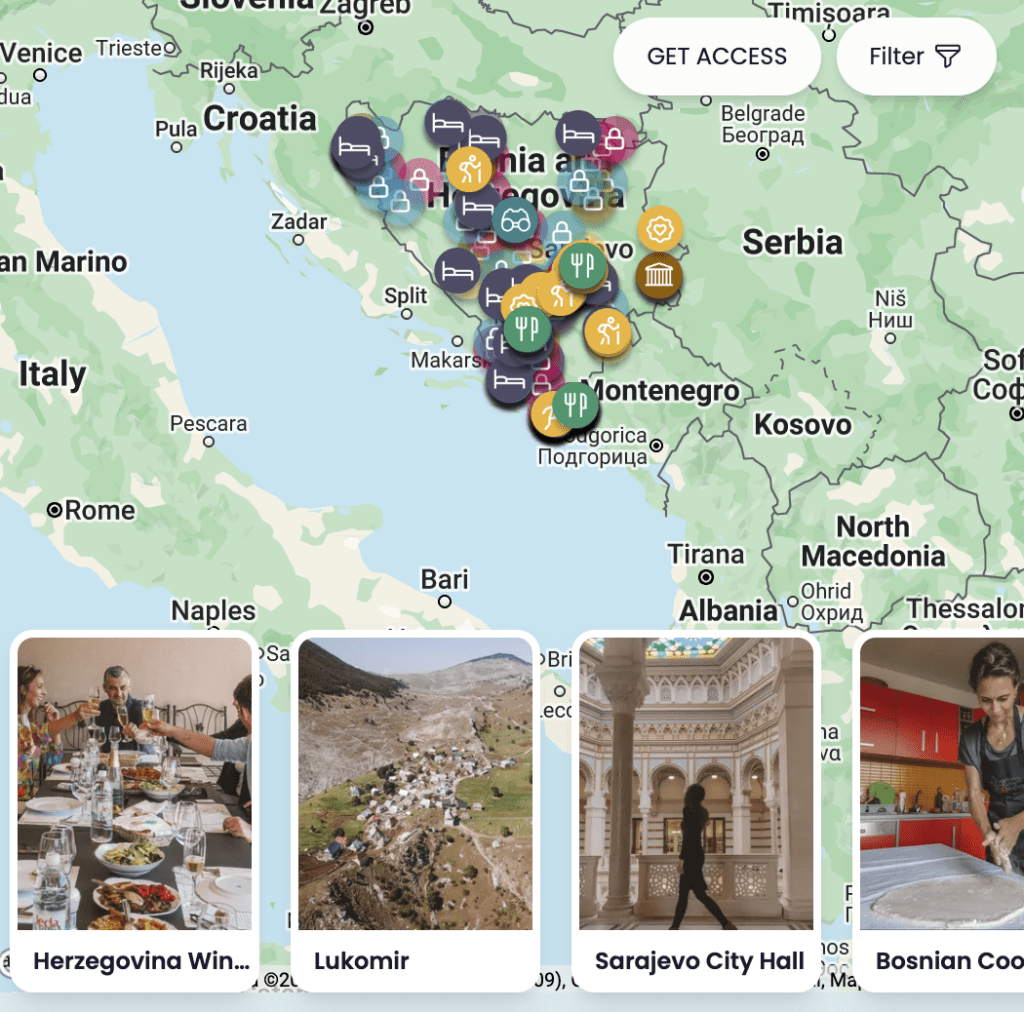Rolling vineyards, cypress trees dot the hills, on which small villages with stone houses lie sleepily in the hot sun, you sit on the covered veranda of the winery, an ice-cold rosé in your glass ... sounds like Tuscany - but it's Bosnia and Herzegovina!
Believe me, when I first heard that the Herzegovina wine region produces excellent wines (and has done so for 2,000 years), I was just as surprised as you! But Herzegovina in the south of the country is actually one of the oldest wine regions in Europe.
Curious? Then let's take a deep dive into the wine glasses, flavours and past of this small wine country (and of course I'll tell you where to look). which winery has the best wines!)
This blog article contains personal recommendations in the form of affiliate links. If you book or buy something via the links, I will receive a small commission. This does not change the price for you at all. Thank you for your support.
No time for the whole article?
Here's a quick overview:
Although the Herzegovina wine region is small, there are three indigenous grape varieties, One was even almost extinct. So absolutely Žilavka, Blatina and Trnjak try it!
Not to be missed:
Only have time for one winery? Then go to Emporia Royal Vineyards. Even if you don't book a tasting, you can sample local wines and enjoy a delicious meal in the restaurant. It is also located right between Mostar and Blagaj - directly on the "tourist route".
Where to stay in the wine region
To reach all the wineries quickly and easily, the best place to stay is near Mostar. My favourite is Hotel Bunabeautifully situated on the river and even with its own wine cellar!
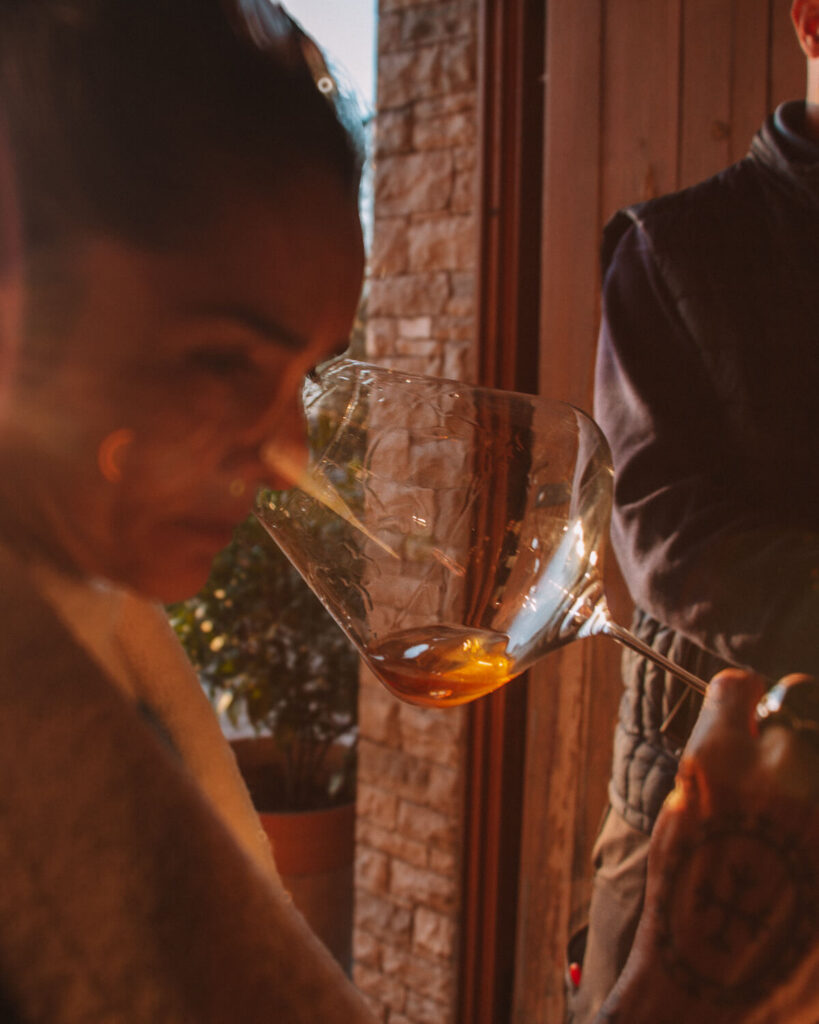
Jump directly to ↓
Viticulture in Herzegovina in Bosnia: A brief history lesson
Viticulture has existed in Bosnia and Herzegovina for thousands of years. A Illyrian tribe called Daorsiwho inhabited the Mediterranean region of Herzegovina in the south of the country in ancient times, brought viticulture with him from Greece. Later, vines and grapes can even be found on medieval gravestones - a sign that viticulture must have been an important economic sector.
With the arrival of the Ottomans, viticulture almost completely disappeared from the region, with only a few monks and monasteries remaining faithful to wine production. But with the arrival of Austria-Hungary at the end of the 19th century, the tide turned: Emperor Franz Joseph and his wife Elisabeth (yes, that's right: Sissi!) were so fond of Herzegovinian wines that they even claimed imperial vineyards for themselves - and even today there are still a few wineries that proudly bear the epithet "imperial".
Two world wars and socialism have unfortunately not contributed to the further development of the wine region - Bosnia and Herzegovina is therefore still far behind in international comparison. But in recent years innovative, courageous young winegrowers have driven viticulture forwardThe winegrowers have experimented with new ideas and old grape varieties, creating an exciting wine region that is well worth a visit!

The three autochthonous grape varieties of Herzegovina
I remember that on my first visit to Bosnia and Herzegovina, I couldn't order any Bosnian wine at all in the restaurant. The only thing you could get was Croatian graševina from a small 180ml bottle - which had probably been sitting on the shelf for two years. The taste was accordingly 😅 Alternatively: some house wine that had the colour (and taste) of apple cider vinegar and didn't necessarily warm me up to Bosnian wines.
Fortunately, this has now changed! Over the past two to three years, many Restaurants in Sarajevobut also Bosnian wines and winemakers throughout the country.
And the quality of the wines has also improved dramatically. What's more, this small country actually has three autochthonous wine varieties - This means that they only occur here in the region. So if you're in Bosnia-Herzegovina, keep an eye out for these three on the wine lists!
Žilavka
The white grape variety grows throughout Herzegovina and was the most popular grape in the country during the Austro-Hungarian Empire.
Žilavka wines are dry and acidic, yet fresh and fruity. They are the perfect summer wine, although there are also some labels aged in oak barrels.
Blatina
The red grape from the Mostar region is sometimes called the "bottomless pit" - not easy to grow, functionally feminine (meaning it must be pollinated by another grape variety) and sensitive.
Without Blatina, I probably still wouldn't drink red wines - because before I tried it, I wasn't particularly fond of red wine. The ruby red colour alone is special and Blatina is surprisingly fruity and not too heavy for a red wine.
Trnjak
This second indigenous red grape variety was almost extinct. It is only found in a small micro-location in Bosnia-Herzegovina and Croatia and was allegedly introduced there from France by Napoleon's army.
For years, Trnjak was only used to pollinate Blatina. In 2011, winemaker Nuić from Herzegovina rediscovered the wine - and breathed new life into it.
Trnjak wines are potent, full-bodied and complex - a red wine that I have never tasted anywhere else.
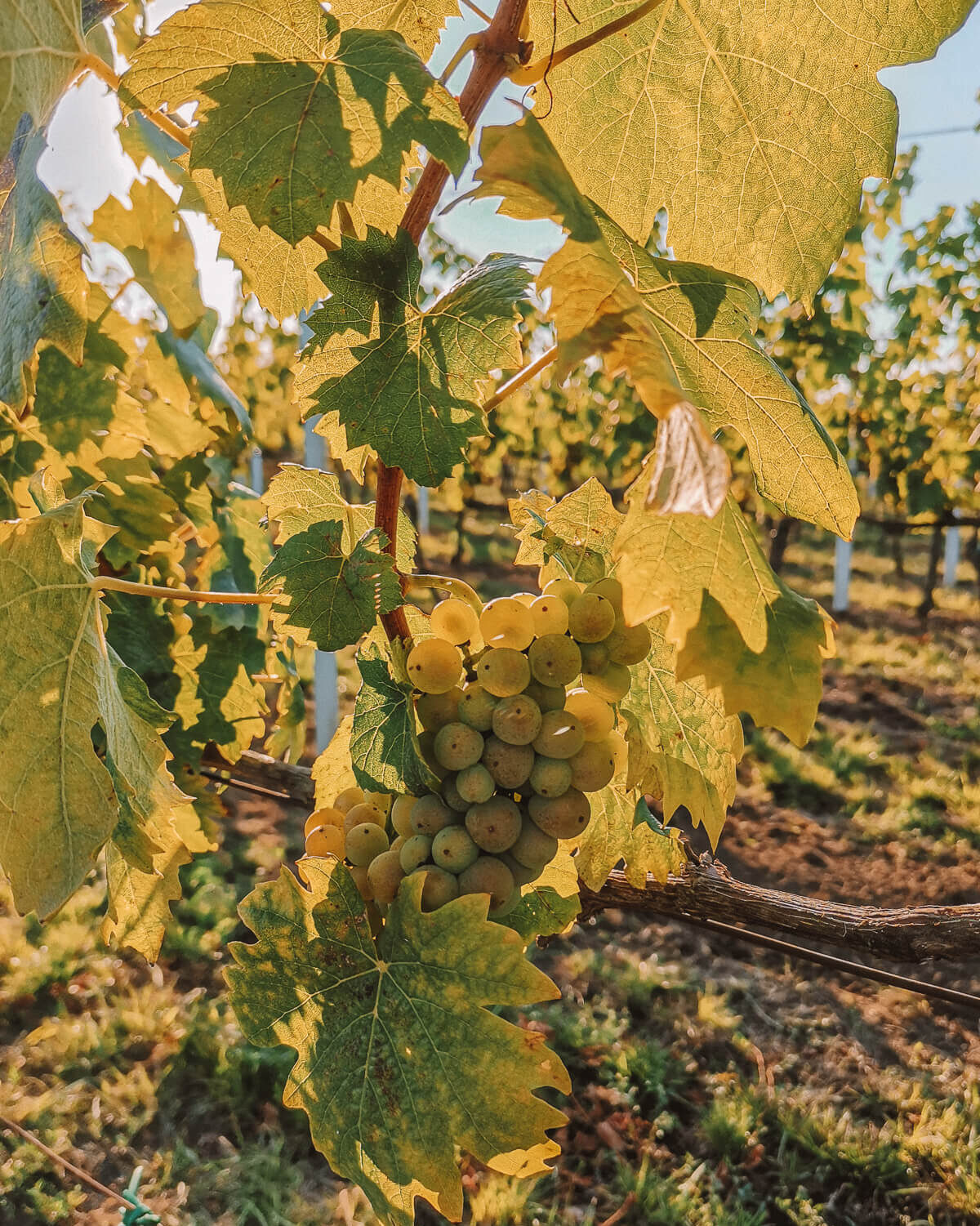
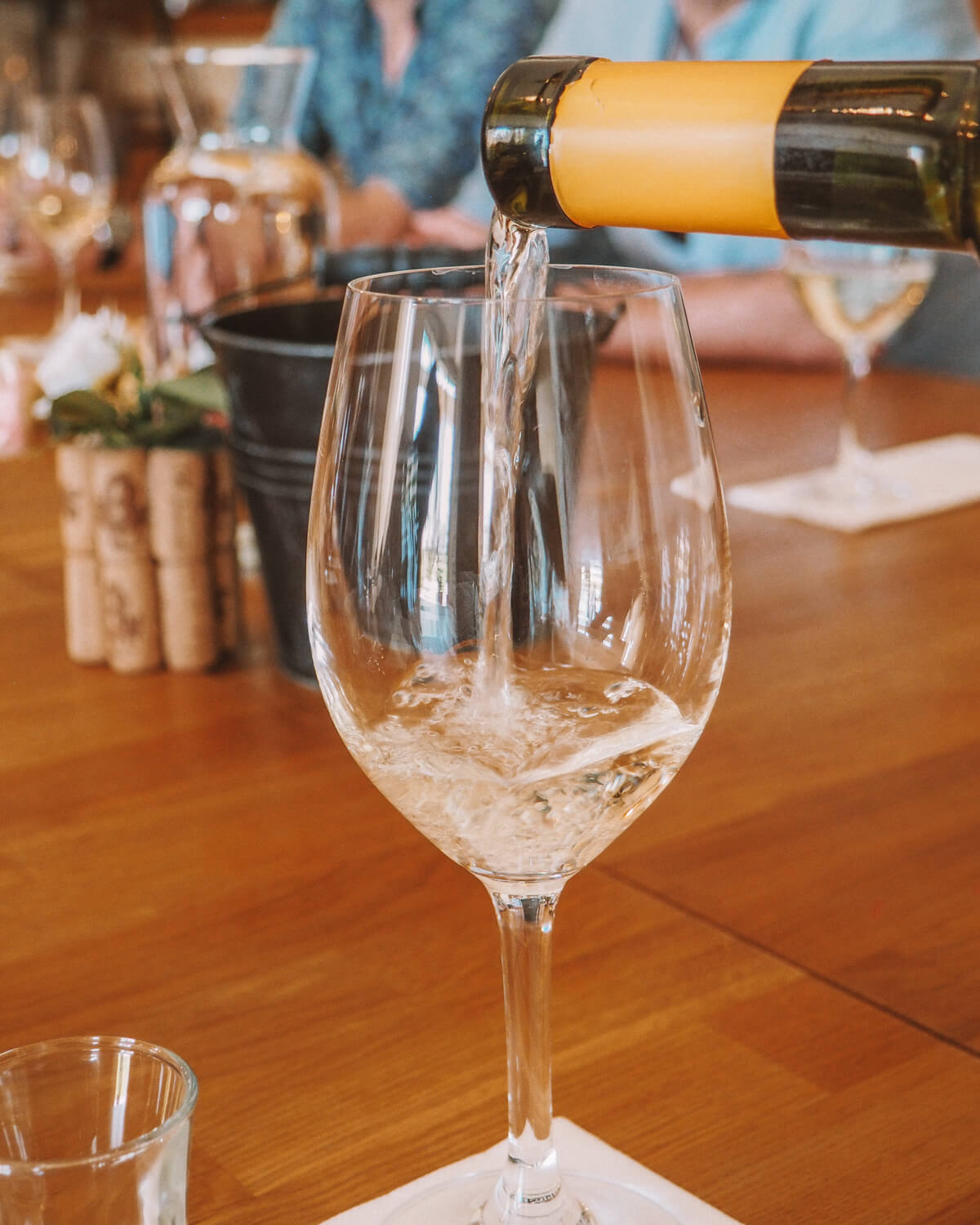

The best boutique wineries for Bosnian wines
Wine tourism is still in its infancy here in Herzegovina. This means that although there are a lot of great, family-run boutique wineries, not all of them have a tasting room and are not permanently open. This means that if you want to do a tasting, you have to book in advance.
The best thing to do is simply book a Wine tourwhich takes you to the best boutique wineries and introduces you to Bosnian wine culture. If you still want to go out on your own, then I can warmly recommend these wineries:
Škegro WineryA young winery where only indigenous varieties are produced to the highest quality. Winemaker Bariša has high standards for his wines and this pays off: Škegro wines can even be found on wine lists in London. The tasting room and vineyards are currently being developed and when everything is ready, this winery will look like a Tuscan dream! All three autochthonous grape varieties can be tasted here.
Vinarija MarijanovićWinegrowing is now in its fourth generation here and winemaker Josip is always ready to show guests around the cellar and introduce them to Herzegovinian wine culture. There is always something going on at the Marijanovićs' - the four children run around, the brother drops by, Josip's wife says hello - so you feel right at home, and at the same time the wines are of really top quality. Here, skill and technique are combined with Herzegovinian cordiality to create a unique mix. At Josip's you can taste Žilavka and Blatina.

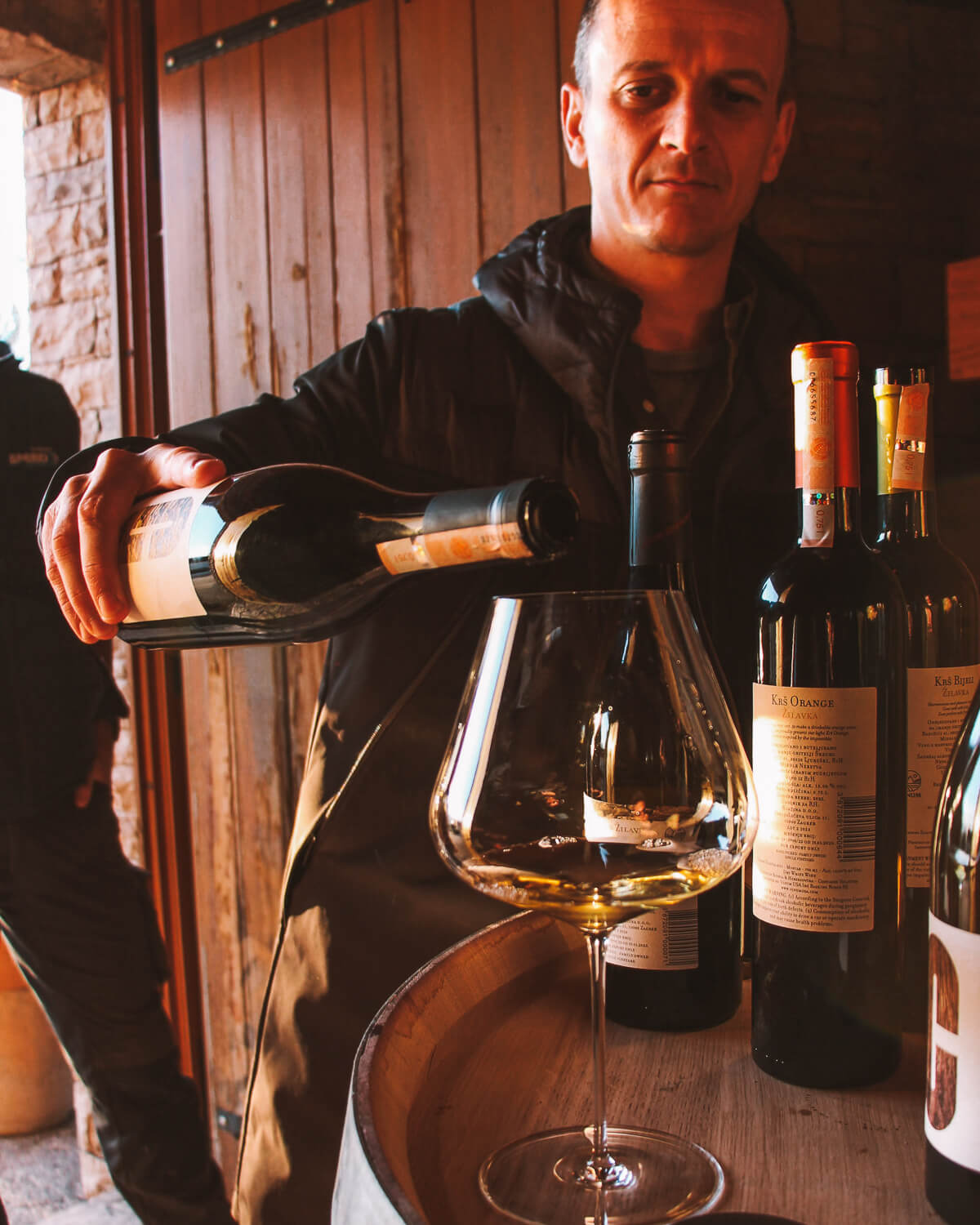
Vinarija MilasA father-son duo who have made it their mission to produce high-quality wines - and they do. Many of their wines are aged in oak barrels and are therefore very special. You can taste all three autochthonous varieties here, but there is no tasting room - but that doesn't matter, because sitting with winemaker Tomislav in the middle of the wine barrels, breathing in the smell of fermentation and chatting about the future of viticulture in Herzegovina is an experience that you probably won't get anywhere else
Emporia Royal VineyardsThis winery has a hotel and restaurant and is therefore the only one where you can simply come to taste wines. For a professional tasting with a tour of the cellar, however, you must make an appointment. Emperor Franz Joseph allegedly had the wine from this winery reserved for his private consumption. You can taste Žilavka and Blatina here.
Vinarija DomanoFormerly an imperial winery, then one of the largest producers during socialism, this winery is now returning to its boutique roots. You can also taste something very special here: the only sparkling wine in the country made from the Žilavka grape using the old champagne method. So good!
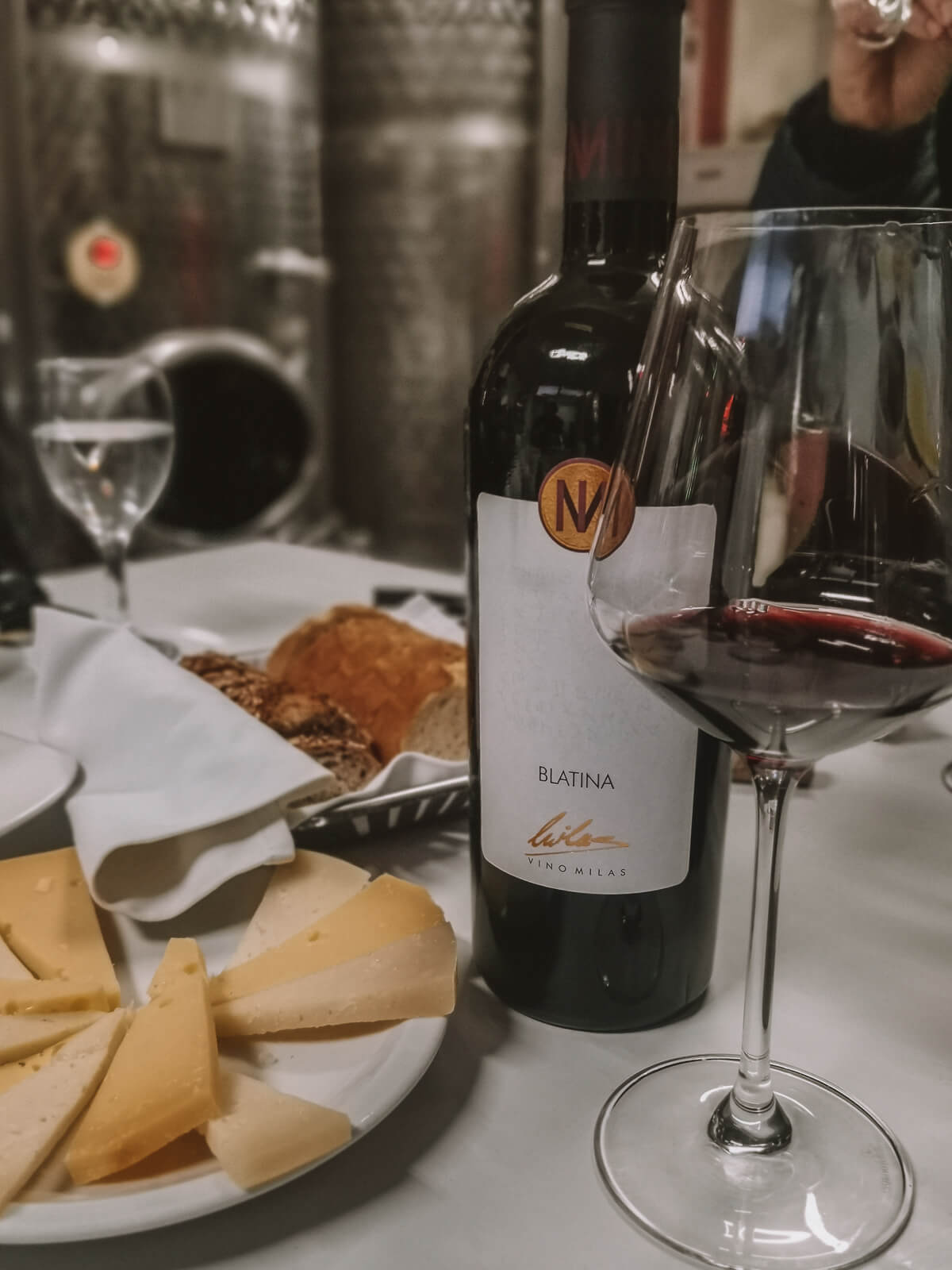
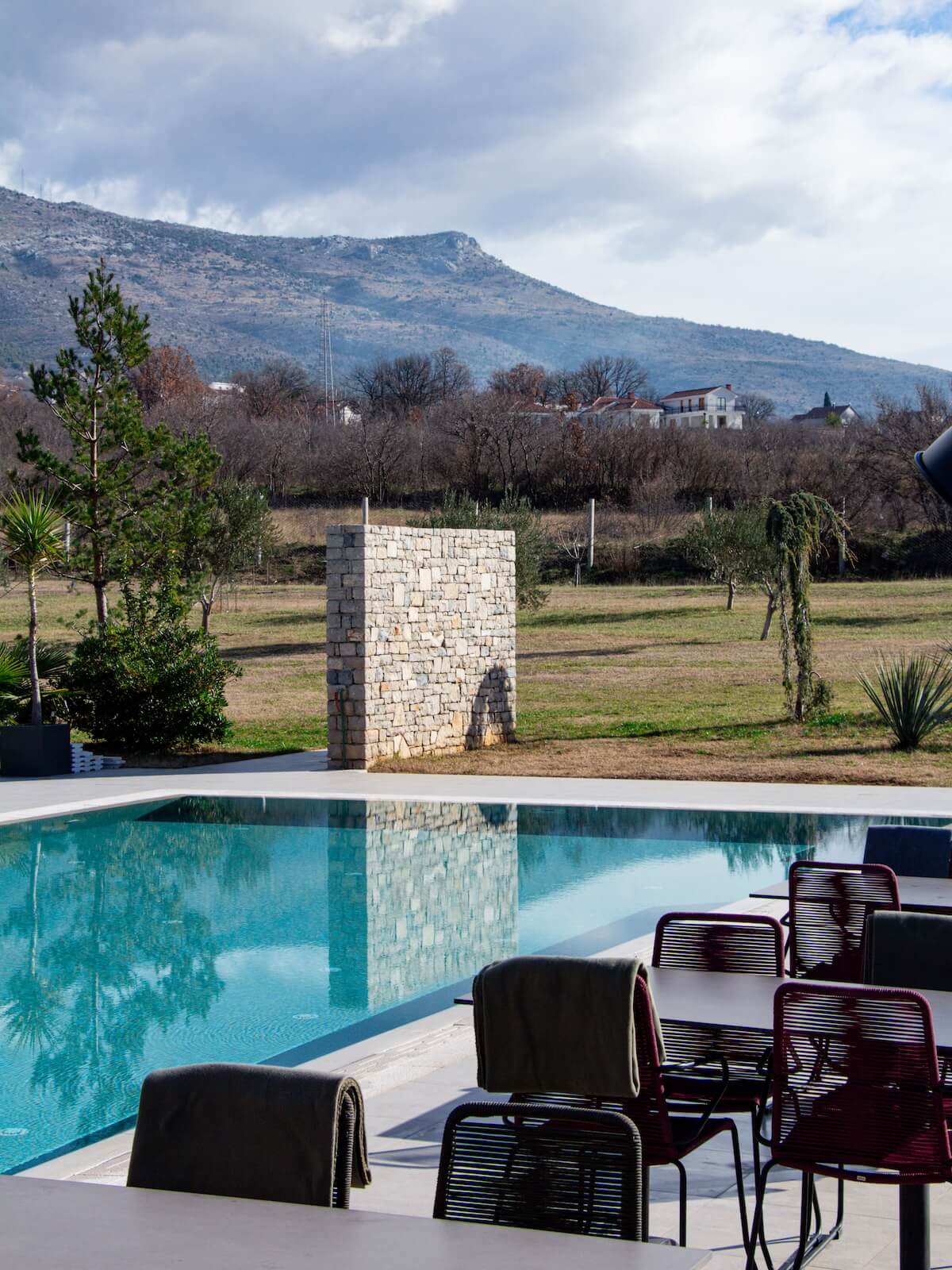

Vinarija BojanićTasting at this family winery in Trebinje will make you feel right at home. You can taste Žilavka and the Montenegrin red wine Vranac with the two brothers Stevo and Dimitrji and also visit the vineyards. Here you come as a tourist and go home as a friend of the family.
Galerija Vukoje: I have to admit that the Vukoje wines are not my favourites 🙈 But the restaurant and the tasting room are really beautiful, with a unique view over Trebinje - and as we all know, there's no accounting for taste, so make sure you plan for the fancy tasting experience and a view.
Puntar Winery: If you are travelling a little off the beaten track (for example on the way to Split in Croatia or in the Bosnian coastal town of Neumthen stop by the Puntar family winery. They have a tiny tasting room where you can sample cuvées created with indigenous and international grape varieties.
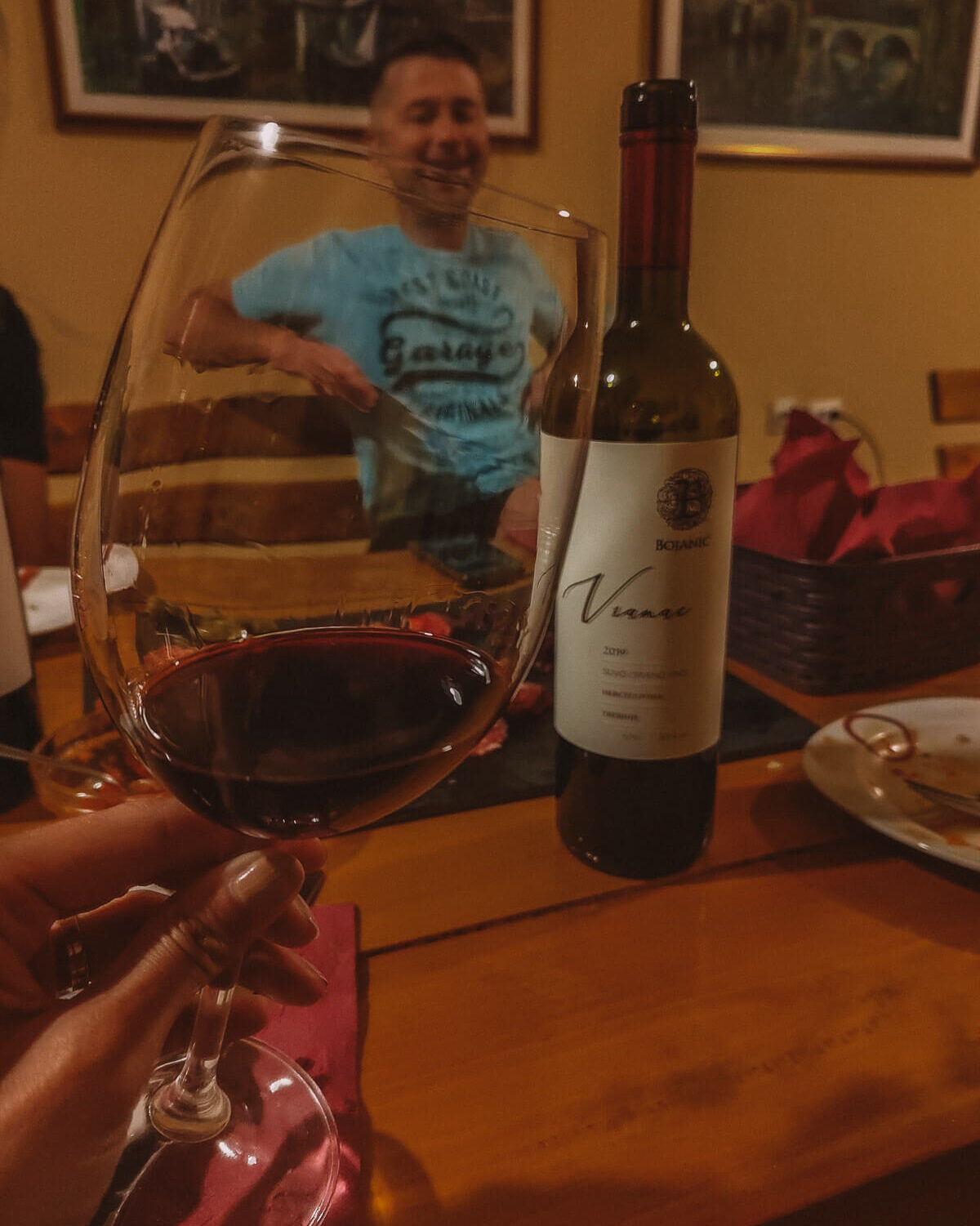


Wine tours in Bosnia and Herzegovina
As already mentioned, it can be a bit of a hassle to arrange appointments with winegrowers yourself, attend the tastings, then organise accommodation ...
For this reason, my husband and I have created wine tours in Bosnia and Herzegovina with our boutique travel agency Cheyf - for anyone who is interested in wine, wants to learn more about winegrowing in Herzegovina and simply wants to have a relaxed time and soak up the Herzegovinian way of life.
Sounds good? Then read more about our .cheyf wine tours here!


Travel planning for the Herzegovina wine region
Are you still planning your trip to the region? There is an incredible amount to discover in Herzegovina - I would recommend at least three days for Mostar and the surrounding area insurances.
📍 Still need somewhere to stay? These three hotels are centrally located in the wine region and close to most of the wineries I recommended above:
💲 Motel KoloBed & Breakfast on the river Buna with small flats and private pool
💲💲 Hotel BunaLocated directly on the river Buna, with a restaurant under tall plane trees and its own wine cellar
💲💲 Villa MonakoSleep directly on the winery in a guesthouse with a fantastic view over the vineyards
I've been living in the country since 2021 and now know it really well - from restaurants and must-sees to real hidden gems!
For anyone exploring Bosnia and Herzegovina for the first (or second) time, I've put together this handy travel map and app for you. over 300 spots that you should not miss.
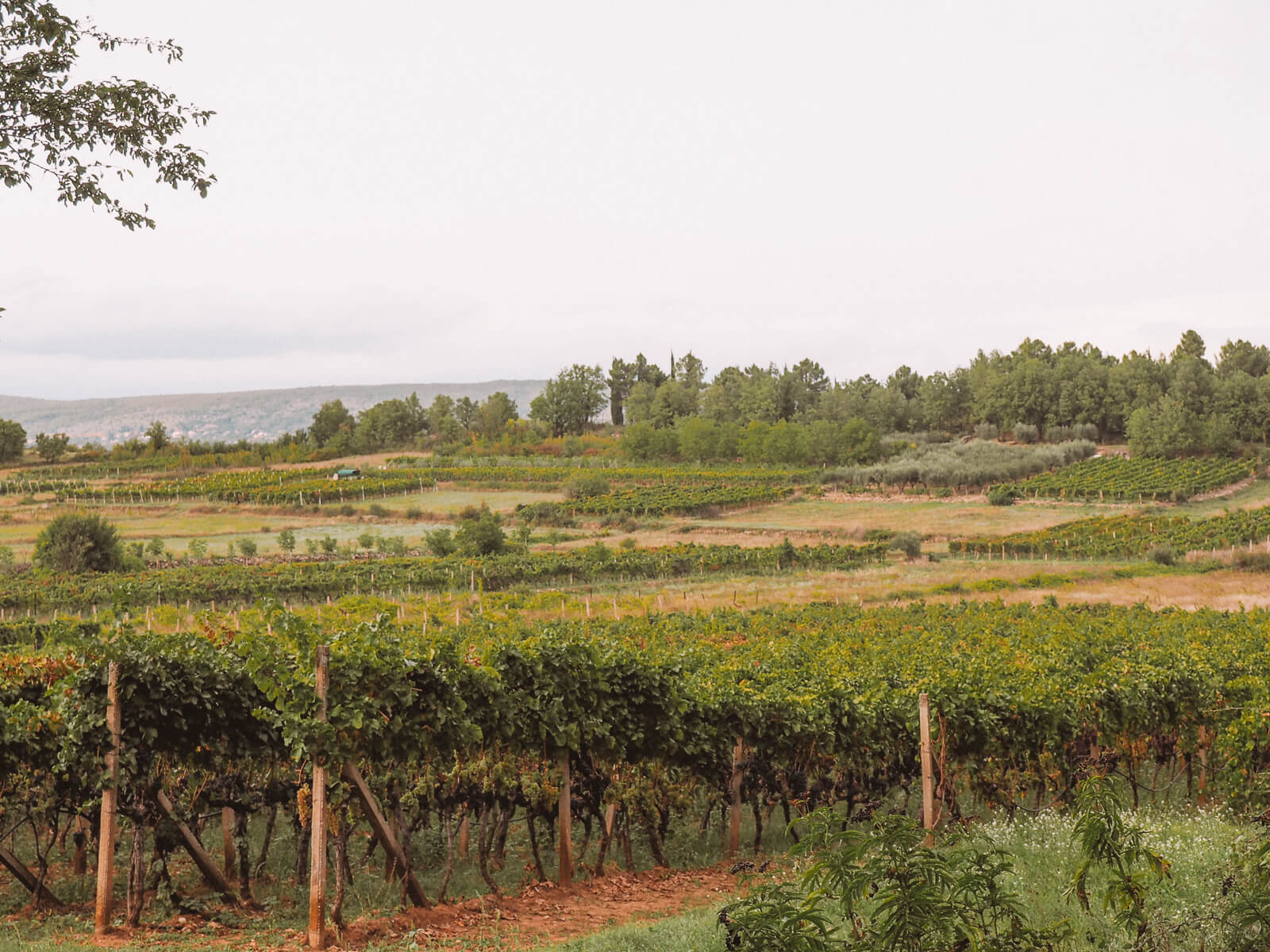
Bosnian wines - a special tasting experience
I hope that you now feel like getting to know these interesting grape varieties and immersing yourself in this culinary part of the country - because yes, Bosnian cuisine is incredibly diverse and wine is an integral part of it.
Wine tourism is still in its infancy, so I have not included any fixed routes or suggestions in this post, as appointments have to be made individually with the winemakers on each day and at times of the year such as the harvest some wineries close completely for tastings - but I promise you: your taste buds will thank you for the effort (and as already mentioned: you can easily take the stress out of planning with an organised wine tour)! Cheers 🥂
